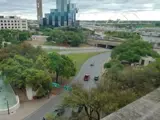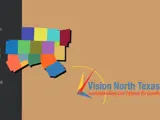Neil Sperry writes...As Leyland Cypress, Italian Cypress, and even Arizona Cypress have cratered under attack of Seiridium canker and redtip photinias have been blasted by Entomosporium fungal leaf spot, our native Eastern Red Cedar Junipers (Juniperus virginianus) have stood strong as tall screening plants.
Jump ahead to spring 2024 and calls and letters started pouring in asking why this venerable old plant was suddenly dying out. Not by the thousands, but certainly a lot of them, and without any apparent reason.
I started asking around 6 or 8 weeks ago, and I got several mixed answers. But I had a nice visit with Steve Houser, tree man beyond comparison (that’s my description, not an official title), and he gave me my first really sound leads. Steve was the founder and is the owner of Arborilogical Services of Dallas/Fort Worth (and an advertiser here in e-gardens I need to mention). He was also one of the very first people to be named Arborist of the Year here in Texas.
'Historic' Trees Designated by City Council
The Dallas City Council designated nearly 100 trees throughout the city as "historic" during its Wednesday meeting.
Six locations are now home to “historic trees” as defined in the Dallas City Code, according to a resolution passed unanimously by council members. These six locations include the following:
- The Post Oak Grove at Pioneer Park
- The Big Tree Grove at Moore Park
- The Live Oaks and Cedar Elms at Dealey Plaza Grove
- The Big Spring Bur Oak at the Big Spring Historic Overlay
- The Cherokee Park Tree at Dallas Heritage Park
- The California Crossing Comanche Marker Tree
This item was highlighted during Wednesday’s meeting by Council Member Jaynie Schultz (District 11).
“I hope this is a trend we do throughout the city,” she said.
Dallas Takes an Unprecedented Step to Save Its Historic Trees — and We All Missed It
The owner of Arborilogical Services, Inc. wrote an Opinion article that was featured in the Editorial section of The Dallas Morning News on Sunday, January 8, 2023. Mr. Houser used the opportunity to reintroduce the public to Vision North Texas 2050 (VNT). In 2005, he was a member of the VNT Board of Advisors, a diverse group of community leaders who spent several years developing the twelve principles for development excellence and alternative sustainable growth scenarios to accommodate a growing population with increased housing and transportation needs.
Rather than business as usual and the continued unsustainable layout patterns of urban sprawl, VNT recommended developments with a mix of residential and retail within walking distance to public parks, outdoor recreational opportunities, and public transportation.
Unfortunately, no one is paying attention to VNT 2050 and we continue catering to developers and creating urban communities in areas previously considered rural or country. These communities are not sustainable or ecologically healthy. We need to adhere to the twelve principles as outlined in the VNT report.
Do your trees need help?
We're ready to grow a relationship.



